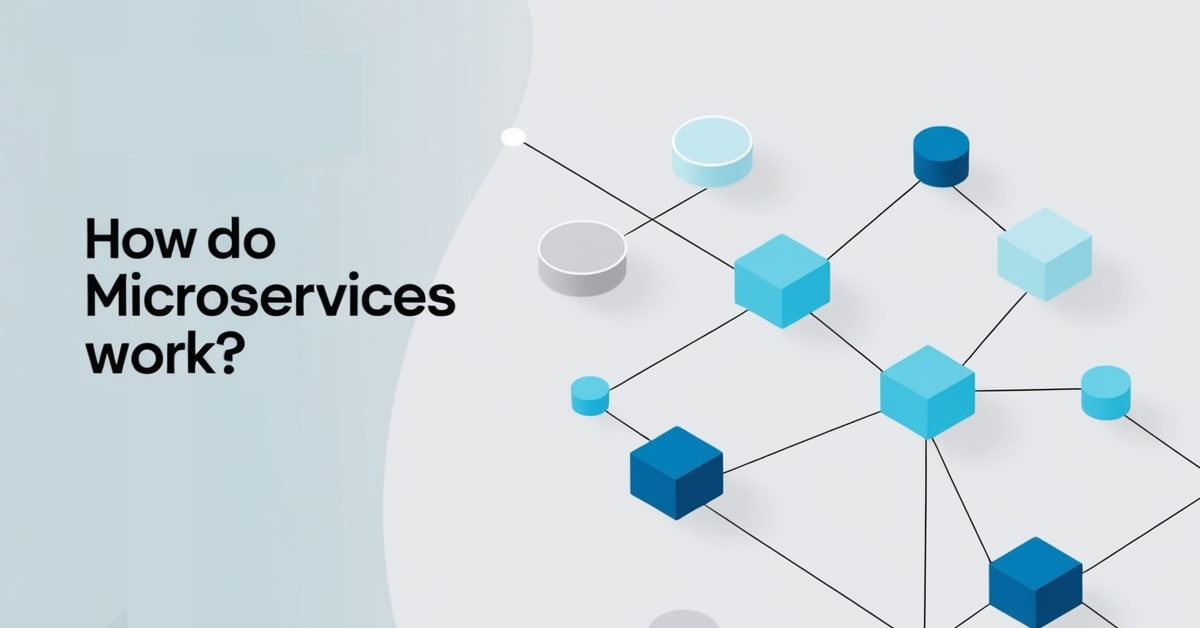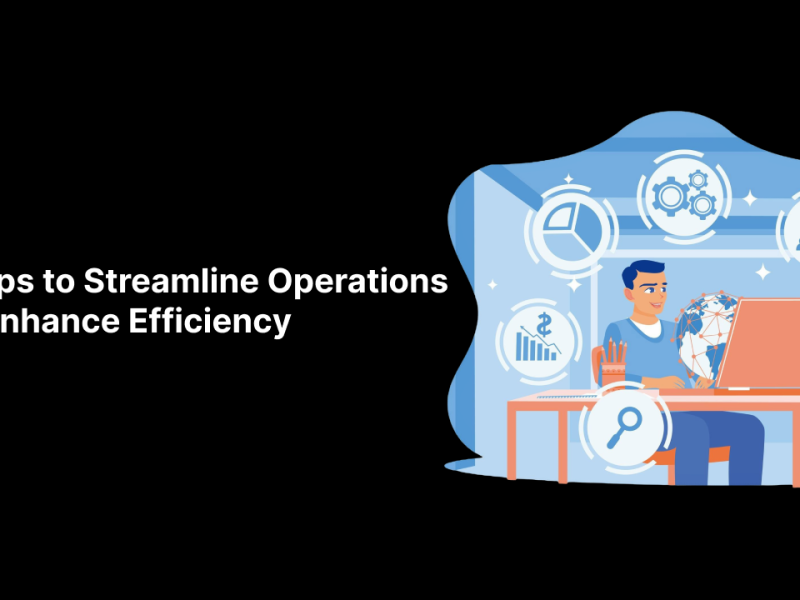Microservices or microservice architecture is a development approach that divides a large monolithic application into loosely coupled, independently deployable modules based on the business domain. Each container is an individual self-sufficient item that performs only one business process and interacts with others by API. This allows organizations to build, release, and improve individual elements of their application to boost flexibility and redundancies.
How do microservices work? They partition a large application into subunits, each carrying out a different operation. Following best practices for microservices, each service is independently deployable and scalable, focusing on clear boundaries and loose coupling between services. These services communicate using HTTP/HTTPS, message queues, or whatever other by-protocol transport needs to be flexible and sustainable. It means that you can implement microservices, test them, update them, and scale them separately, positively impacting the application’s flexibility and extensibility.
Microservices vs Monolithic Architecture
In a monolithic application, you integrate all the functionalities into a single block and deploy them at once. Technically, this approach is less complicated initially. However, as the application evolves, it creates issues in the design aspect. There are cases where changes require the redeployment of the entire application, which increases the development cycle time and can expose the application to some downtimes.
Advantages of Microservices
- Scalability
Teams can also deploy and scale microservices independently from each other. They may even be different sizes, which is efficient in terms of resource allocation. This is particularly beneficial when the load on some application components changes over time.
- Flexibility
Different services can use different technologies and programming languages, choosing the best tool for a certain job. This approach helps every team choose the right technology stack for each service.
- Resilience
If one of the services fails due to design flaws, the failure of that particular service does not affect the reliability of the other services. Hence, it increases the reliability of the whole system. Working with microservices means if the failure occurs, it only affects the specific service.
- Faster Development
One or several teams can create, refine, and deploy services, allowing for quicker release cycles. They are independent entities that avoid the formation of a ‘middleman’ or ‘single point of contact,’ which greatly hampers the development phase.
- Ease of Deployment
Deploying individual services independently greatly reduces the risk and impact of updates. You can easily add or change functions. And distribute result on the server without the client-side and server-side reinstallation, minimizing the client’s inconvenience.
Implementing Microservice Architecture
Defining Microservices
The first step when working with microservices is determining and describing the various microservices derived from an organization’s business capabilities. This includes dividing the application into smaller sub-modules. Each has a specific duty to perform. This step requires knowledge about business processes since the goal is to uphold the business while not offering generalized services. That is why you should control the process and ensure that each microservice is clearly delimited and responsible for only one specific function.
Designing Microservices
When it comes to microservices infrastructure, design entails deciding on the structure of each service and the details of how they will communicate with each other. Therefore, it is important to plan for failure so that some services can fail without affecting the entire system. Every given service should own a clear API to interface with other services. Furthermore, you must consider data consistency, as most microservices manage their own data, resulting in distributed data management.
Development of Microservices
It starts with selecting the appropriate technology stack for each service. Where needed, developers can choose diverse programming languages and frameworks. There is a need to enforce strict contracts with APIs and ensure that services adhere to the standards in their interactions. Each microservice is a standalone service but must fit into the entire system’s architecture. Applying version control and CI/CD pipelines is a way to facilitate the microservices’ development process because you should test and integrate every microservice into the system regularly.
Testing Microservices
Unit, integration, and end-to-end testing are the primary approaches for adequate microservices testing. You should test each microservice individually and how well different services integrate within the microservices infrastructure. Automated testing, continuous integration, and deployment tools can be used here. Another use of contract testing is to ensure that the communication between services conforms to the API contracts written.
Microservices Infrastructure Implementation and Management
Containerization
This is the process of building a container for each micro-service to exist in its context and the other related services. Of the instruments that offer features for microservice containerization, Docker is the most famous one today. It allows the developers to build compact and relatively lightweight structures of the containers for autonomous work. It is a package that contains everything associated with the service’s running, from the language used in coding to the environment, tools, and libraries. Indeed, it is of great importance to have containerization mechanisms that support the microservices architecture.
Orchestration
It manages every aspect of containers, from where to position them to increasing or reducing the number of containers. Kubernetes is among the most popular tools for deploying, scaling, and managing the application, so there are no problems when the team launches it on several interconnected computers. Additional features like auto-scaling, self-healing, and rolling updates are significant for its stability and further scalability within microservices.
API Gateway
API Gateway is a component that manages the routing, composition, and protocol transformation of requests originating from the client. It also has security, monitoring, authentication, and rate limiting. Some tools that are familiar with such solutions are Kong and Amazon API Gateway. API reduces contact between clients and services and integrates several service calls into one, which reduces latency and complexity.
Service Discovery
Service Discovery enables microservices to find and communicate with services in real-time. This is very important since, in a distributed system, these services can be elastic and, therefore, can scale up or down. For example, tools for service discovery like Consul and Eureka are highly effective instruments. They maintain the service registry and assist the services in finding other instances or services with no-coded addresses.
Load Balancing
Load Balancing involves distributing the network traffic from different servers so that none of them is overwhelmed. This makes it easier for the system to be available and reliable to users. You can implement load balancers in hardware or software. Some of the best software load balancers are NGINX and HAProxy. This is important because load balancing enables the application to address diverse traffic levels, which boosts the application’s capability and, in effect, the users’ satisfaction.
Monitoring and Logging
It is also necessary to constantly monitor and log to ensure that the microservices architecture is healthy. Supervisory tools enable the assessment of the availability and performance of services, and logging tools capture and process logs to facilitate the identification of service-related problems. While there are several different tools for these two activities, Prometheus and Grafana are well-known for monitoring, and ELK Stack (which comprises Elasticsearch, Logstash, and Kibana) for logging. Logging allows teams to track the system’s activity, thus quickly addressing problems. They are key to a strong base of microservices.
Tools and Technologies Used in Microservices
There are several tools and technologies to implement and manage a microservices architecture efficiently. These tools help with containerization, orchestration, API management, service discovery, load balancing, and monitoring.
Docker
Docker is currently the most popular tool for packaging applications and their container dependencies. It also ensures the correct behavior in various environments and allows for the fast launch and growth of microservices.
Kubernetes
Kubernetes allows for the containers’ deployment, scaling, and management across the clusters based on automation. These features include auto-healing, load distribution, and rolling deployment, which are significant for a strong microservices environment.
Kong
Kong is an open-source API gateway. Teams can use it for request routing, load balancing, authentication, rate limits, and access logging.
Amazon API Gateway
An API hosting and management service that takes care of all API planning, development, testing, distribution, and security. It performs activities such as traffic management and access control.
Consul
Consul offers several capabilities, including service discovery, health checking, and a key-value store where services can register to have service-to-service communication.
Eureka
Netflix’s Eureka enables microservices to register and discover one another to ease load balancing and failover.
NGINX
NGINX is performance machinery that works as a load balancing and reverse proxy server. It divides all the incoming traffic through the selected servers so there are no burdens with traffic.
HAProxy
HAProxy is a robust and high-performing TCP/HTTP load balancer that manages workloads to enhance microservices.
Prometheus
A monitoring system written in open-source code is very reliable and easily scalable. Prometheus scrapes metrics from services and stores them in a time series database.
Grafana
You can easily integrate it with Prometheus to design visually appealing interactive dashboards for microservices’ real-time monitoring.
ELK Stack
The ELK Stack is an end-to-end log management and analysis tool, with Elasticsearch as the main index, Logstash as the indexing tool, and Kibana for visualizing data in interactive dashboards.
Conclusion
Microservices architecture is an application design approach that is opposite to monolithic architecture. It entails breaking applications down into independently callable microservices, allowing the organization greater scalability, reliability, and rapid application development. Microservices operationalization has several stages, including identifying, designing, coding, and assessing the microservices alongside deploying and operating the microservices through containerization, orchestration, API gateway, service registry/registry, load balancing, and efficient monitoring/logging. With the help of tools such as Docker Kubernetes and API gateways, it is possible to maintain suitable conditions and secure stable microservices’ operation.
Understanding how do microservices work and recognizing the intricacies of working with microservices can empower teams to build more resilient and adaptable applications. With the right microservices infrastructure, businesses can navigate the complexities of modern software development and achieve greater operational efficiency and scalability.



Naveen Khanna is the CEO of eBizneeds, a company renowned for its bespoke web and mobile app development. By delivering high-end modern solutions all over the globe, Naveen takes pleasure in sharing his rich experiences and views on emerging technological trends. He has worked in many domains, from education, entertainment, banking, manufacturing, healthcare, and real estate, sharing rich experience in delivering innovative solutions.


